How to Cut Wire without Wire Cutters (9 Alternatives)
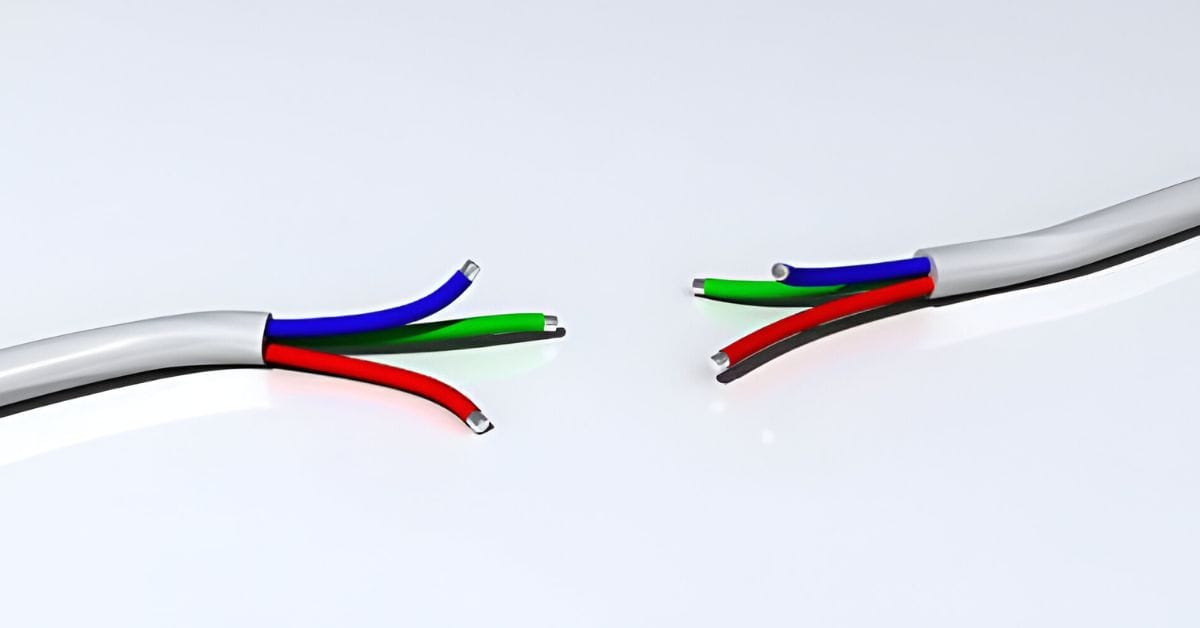
Wire cutters are handy for cutting wires, but what if you don’t have one?
They are designed to make fast and clean cuts for any type of wire, including building wire, copper, brass, steel, etc. If you don’t have a wire cutter in your toolbox, or it’s gone missing, fortunately, there are other ways to accomplish the same task.
These are 9 alternative ways or tools you can use to cut a wire without a wire cutter:
- You can bend thin wire or use a flat-head screwdriver or chisel, pliers or pincers, tin snips, or a knife.
- For thick wire, use a hacksaw, reciprocating saw, rotary tool, angle grinder, or cordless drill and gas torch.
In this post, I will show how to cut wire without wire cutters using 9 alternatives. Let’s get right into the details.
Ways to Cut Wire without Wire Cutters
Recommended Ways
If you do not have a pair of wire cutters, don’t despair!
You can use several alternative tools or methods to get the same job done. You might have to experiment to find the right tool for a particular type and gauge of wire to deliver an accurate and clean cut, as using some alternative tools may compromise its integrity.
The table below lists our recommended ways to cut wire without a wire cutter and those not to use when attempting to cut wire because they are considered unsafe.
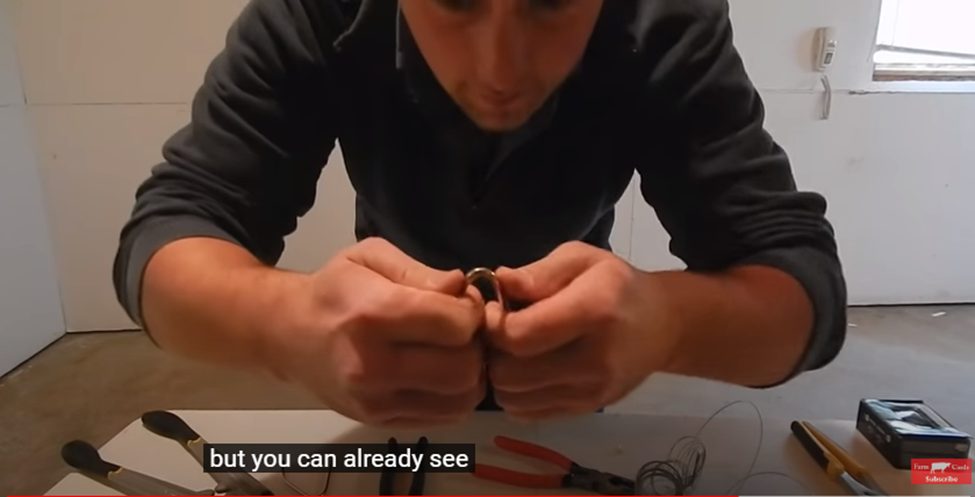
| Recommended Ways | Unsafe Ways (Not Recommended) |
| 1. Bending the wire 2. Using a flat-head screwdriver or chisel (for soft and thin wires) 3. *Using pliers or pincers (fine for thin wires) 4. *Using a hacksaw (best for thick wires) 5. Using tin snips 6. *Using a reciprocating saw (generally ideal) 7. Using an angle grinder or other rotary tool (for thick wires) 8. Using a cordless drill and gas torch | – Using a knife – Using scissors – Using nail clippers |
A pair of pliers suits thin wires (Method 3), whereas a hacksaw is a good alternative for a thick wire (Method 4). Otherwise, a reciprocating saw (Method 6) is generally the ideal tool instead of a wire cutter. I recommend wearing protective eyewear for the last 3 recommended methods (6-8).
Note that thin copper wire is generally easier to cut using an alternative tool than other wire types. It is softer and more malleable than steel, with a lower score on the Hardness Rockwell B-Scale and even brass (an alloy of copper and zinc).
Non-Recommended Ways
Using nail clippers or scissors to cut wire is not recommended because they are not designed for such work.
Using a knife is possible, but you must be extra careful. A knife can be too sharp and dangerous, whereas scissors and nail clippers are not sharp enough for properly cutting through wires.
Using either will not cut the wire safely, and you may damage both the wire and the tool. The wire can easily become unsafe, increasing the risk of a short circuit or an electrical shock if used, and you also run the risk of getting injured if you use such tools.
Method 1: Bending the Wire
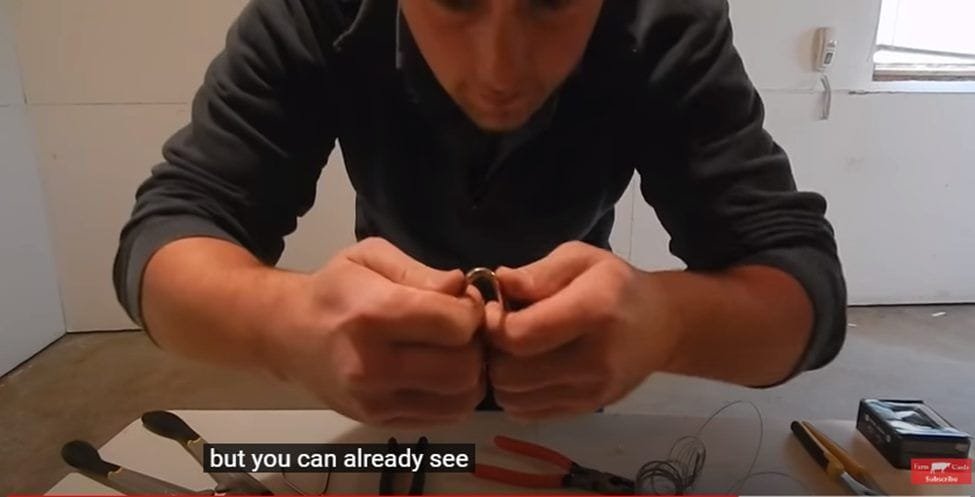
You can try bending the wire if it is thin and pliable.
All you have to do is bend it sideways until it starts breaking away. You might not be able to break it easily if the wire is thick or has a jacket over it.
Note that if you bend the wire repeatedly, you may compromise the wire’s general integrity. That’s because the area around the bend or break will harden, making the area stronger and harder than the rest of the wire. Also, the wire may suffer some deformation when applying this bending method, which makes it unreliable for future use.
Method 2: Using a Flat Head Screwdriver or Chisel
A flat-head screwdriver is a readily available tool to cut a wire if it’s soft and thin.
You will also need a hammer and a hard surface and can use a chisel instead of a screwdriver. Optionally, use a clamp to hold the wire and screwdriver in place.
Cut the wire by placing the tip on the wire and hitting the other end with a hammer. The handle must be strong enough to withstand the blows and not break.
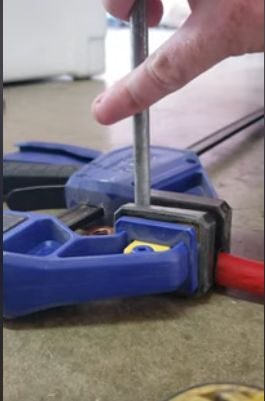
Method 3: Using Pliers or Pincers
Pliers are another common and easily available tool to cut thin wires like screwdrivers.
You can use diagonal cutting or lineman’s pliers for this purpose. Even needle nose pliers can cut through soft wires with a small diameter. Pliers or pincers are not suitable for thick or hard wires.
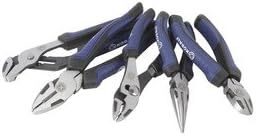
Method 4: Using a Hacksaw

You can use a hacksaw if you do not have a pair of wire cutters.
Ensure the hacksaw has a high teeth-per-inch count to get a clean cut. You must understand that cutting wire, especially a short one, is a bit difficult. The tool is best suited for large-diameter wires. Using a hacksaw to cut a thinner diameter or shorter wires may compromise its integrity. There is a good chance it will deform or bend more than you anticipate after cutting it.
Method 5: Using Tin Snips
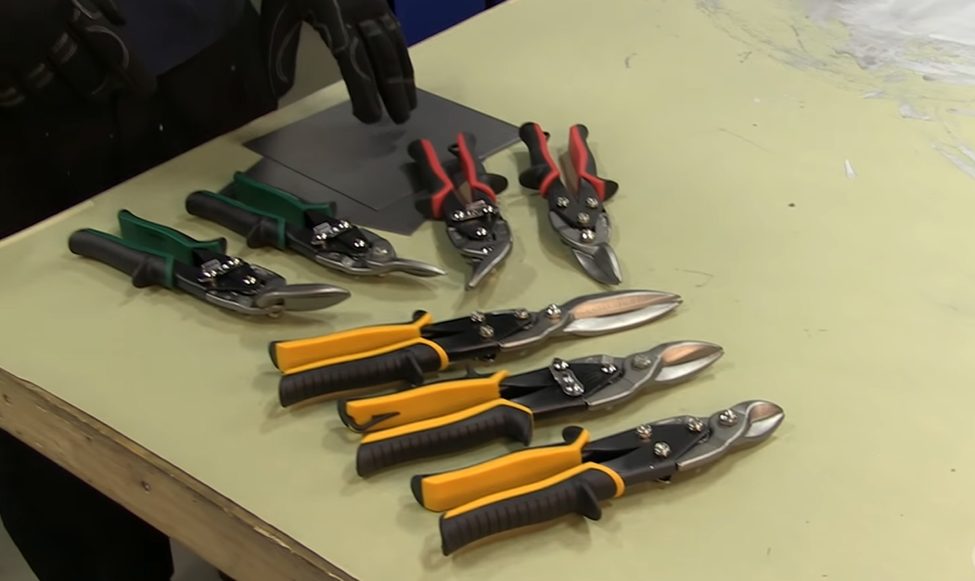
Tin snips come with sharpened blades and about 8-inch handles.
Although designed originally to cut sheets of thin metal, they can also be used to cut copper and other softer wire. However, you must be very careful if you want to use tin snips.
Put the wire between the blades carefully and evenly close the handles. You can get an even cut with tin snips, but you can end up contorting or bending it done poorly.
Method 6: Using a Reciprocating Saw
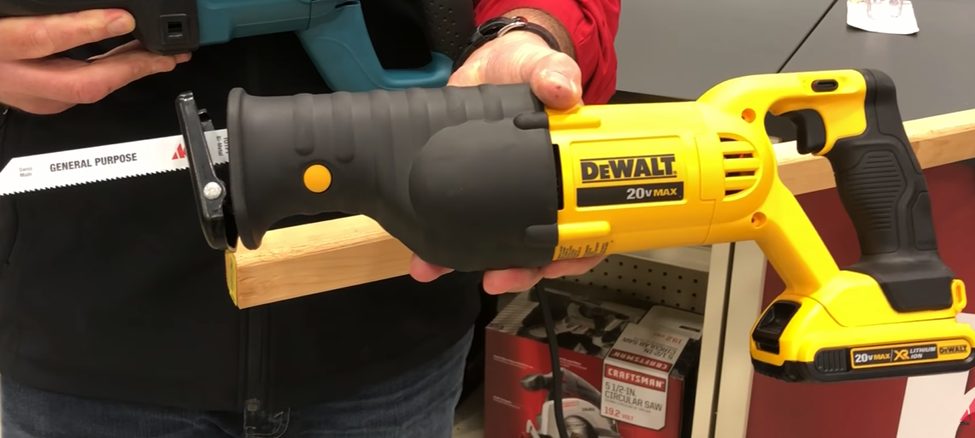
While a hacksaw can cut your wire, it cannot compare to a reciprocating saw.
A reciprocating saw delivers more power and speed, and you will surely get a more even cut with this tool. Reciprocating saws have variable lengths and thin blades attached to them.
Its motor is built into its unit, moving the saw blade forward and backward at high speeds. This device was originally designed for cutting things like wood and pipes in places where a bigger saw would not fit. When using it for cutting wire, ensure that the teeth-per-inches are high so that it can cut the wire with minimal issue.
To cut a wire with a reciprocating saw, turn on the saw and move the blade slowly against the wire as you gently push it until it cuts through. I recommended wearing protective eyewear because the saw’s speed can get the wire pieces to whip in several directions.
Method 7: Use an Angle Grinder (Rotary Tool)
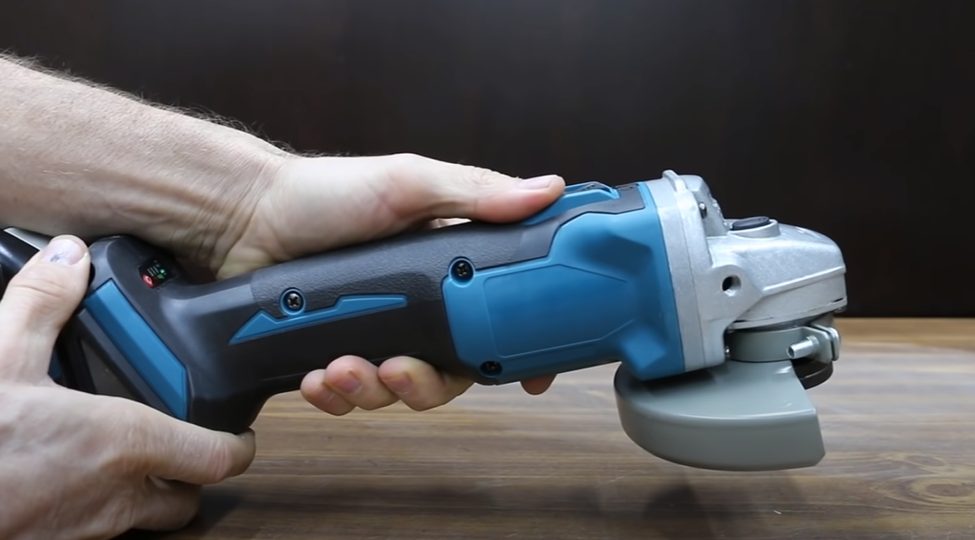
A rotary tool (Dremel) or an angle grinder comes with a circular disk-cutting blade.
The blade rotates at a very high speed per minute. Although normally used to cut metal, it can also cut wire up to about 1 inch thick, depending on the tool’s disc. You can get a more thorough, deep, and clean cut on surfaces using an angle grinder.
Wear eye goggles and turn the grinder on to use this device. Slowly introduce it to the wire’s outer layer and move it slowly until the angle grinder cuts the wire. This tool works best for wires with a small gauge (thick wire).
Method 8: Using a Cordless Drill and Gas Torch
A cordless drill and gas torch allow a more sophisticated way to cut a wire without a wire cutter.
A vice grip is also helpful to hold the wire in place. Hold it in its jaws and fasten its end into the drill’s chuck.
You have to heat the wire with the gas torch until it gets really hot, i.e., when it changes its color to red. Then, slowly and gradually turn the drill until the wire eventually breaks. You should get a clean cut.
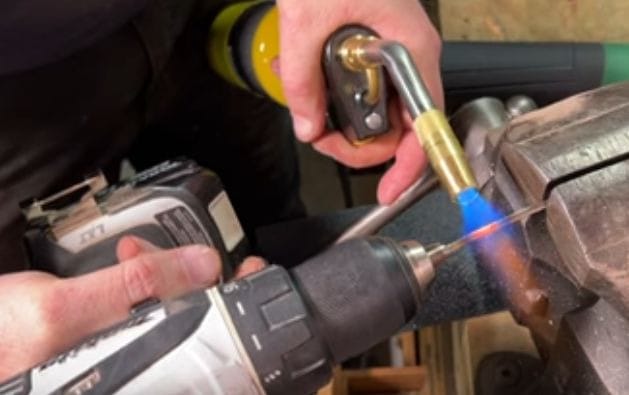
Method 9: Using a Knife
Although I recommended not using a knife to cut a wire, you can still use one if that’s all you can find and you are extra careful.
Don’t expect it to cut through thick or hard wire easily. Unless the wire is thin, the blade can get dull. A tactical or survival knife works better for cutting a wire than a regular kitchen or pocket knife.
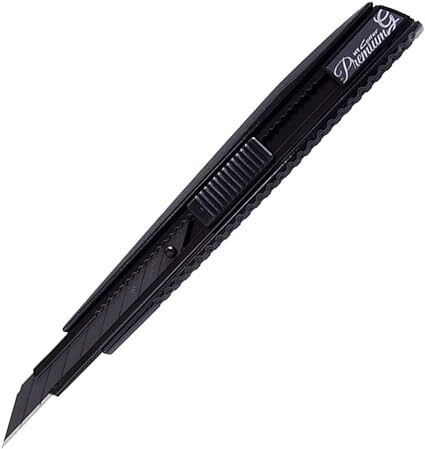
Using a Wire Cutter
This article was about using an alternative to a wire cutter, and I showed 9 different ways or tools you can use.
However, if you cut wires regularly, it’s better to get a proper wire cutter for the job. They are generally inexpensive and can make the job easier and safer. Nothing can compare to wire cutting with a pair of wire cutters.
FAQs
What are the different wire types?
There are different types of wires, and each is used for different projects and situations. The popular options are multiconductor (NM) wires and metal-clad ones (MC).
Multiconductor wires are designed to connect home appliances, such as dishwashers, stoves, and washing machines. They are generally referred to as NM type, which means non-metallic. They include live or hot wires, ground wires, and neutral wires. Non-metallic cables or copper wire are mostly used for heavier appliances with 120/140 circuits.
Metal-clad wiring, or MC, comes with a special metal housing, often aluminum. It contains a neutral, live, and ground wire. This type of wire is often used for industrial applications because it can hold up well against larger loads.
The metal casing gives MC wires protection against failure and fire incidents. Metal-clad wires are more expensive than multiconductor wires because of the high safety measures and materials used in making them. You will find this type of wiring in industrial and commercial applications.
How can you determine the right gauge?
The first step to determining the right gauge is to remove the insulation from the electrical wiring or speaker wires before measuring the diameters. Ensure that you clip the wire end with a wire cutter and also use them to chip into the insulation.
Ensure you strip half an inch from the wire’s end with the cutter’s blade and carefully cut around the whole insulation’s circumference. Then, remove the insulation from the cut. You can measure non-ferrous wiring using a gauge measure. Push in the wire at the circular slots closer to the diameter.
Also, use a denoted gauge to prevent gaps and guarantee that the wire fits snugly. It is worth mentioning that the non-ferrous gauges differ from those used for ferrous metals. You can use the SWG (Standard Wire Gauge) to measure wires that contain iron.
References
Website Resources:
- integrity. https://www.thebalancecareers.com/what-is-integrity-really-1917676
- electrical shock. https://www.mayoclinic.org/first-aid/first-aid-electrical-shock/basics/art-20056695
- Chisal. https://www.amazon.com/Libraton-Professional-Handles-Leather-Woodworking/dp/B084Z243KS
- Pliers and pincers. https://www.amazon.com/Kobalt-0464614-5-piece-Pliers-Set/dp/B00GR98QOA
- Rotary tool. https://www.shoppingbag.pk/amazon-cordless-rotary-tool-12-0v/O004JOSREZ.html
- Sharp knife cutter. https://www.amazon.com/NT-Evolution-Auto-Lock-30-Degree-PMGA-EVO2/dp/B07FM4TWC7/
Video References:
Right On With Jon Crane
Shaun Wilson
